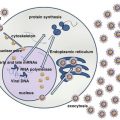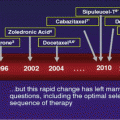© Springer International Publishing Switzerland 2015
Jean-Pierre Droz, Bernard Carme, Pierre Couppié, Mathieu Nacher and Catherine Thiéblemont (eds.)Tropical Hemato-Oncology10.1007/978-3-319-18257-5_22Diagnosis of Diffuse Large B-Cell Lymphoma
(1)
Department of Pathology, The Hammersmith Hospital/Imperial College, London, UK
(2)
Department of Haematology, Université Paris-Sud, Paris, France
(3)
Department of Pathology, Simone Veil Hospital, Eaubonne, France
(4)
Department of Haematology, Kenyatta University, Nairobi, Kenya
Keywords
DLBCLImmunohistochemistryGeneticsDiffuse large B-cell lymphoma (DLBCL) is the most common type of non-Hodgkin lymphoma (NHL) and accounts for 25–30 % of adult NHL in Western countries. However, its relative proportion varies across the world (25–75 % of all NHL), being higher in the tropical countries and in the resource-poor setting. While there could be environmental or genetic basis for this difference, precision of applying WHO classification can also account for the difference. Though it is more common in elderly (peak incidence in seventh decade), it can occur at all ages. While the majority of DLBCLs arise de novo, a significant proportion represents progression from another type of B-cell lymphoma [1–4].
DLBCL is a heterogeneous group of B-cell lymphomas. Several distinctive subsets of DLBCL have been defined. However, most DLBCLs do not belong to these specific subcategories and are classified as DLBCL, not otherwise specified (NOS). About 40 % of DLBCLs, NOS, occur at extranodal sites that include the gastrointestinal tract, bone, testis, spleen, Waldeyer’s ring, salivary gland, thyroid, liver, kidney, adrenal gland and central nervous system (CNS). Almost any organ can be involved by DLBCL [5].
While in most cases of DLBCL an apparent causative risk factor is not identifiable, a minority of cases show underlying immune deficiency. Immune deficiency could be congenital or acquired, the latter being in the context of human immunodeficiency virus (HIV) infection, transplantation or immunosuppressive medication [6–8].
DLBCL is defined in the WHO classification as a neoplasm of medium or large B lymphoid cells with a diffuse growth pattern. The nuclear size of the tumour cells is equal to or exceeds the size of a normal macrophage nucleus or is more than twice the size of a normal lymphocyte nucleus. By definition, DLBCL expresses B-cell antigens—CD20, CD19, CD79a, PAX5, CD22 and immunoglobulin. The demonstration of one or more of these antigens is essential for the diagnosis [5].
1 DLBCL-NOS
1.1 Morphology
In tissue samples (lymph nodes and extranodal sites), there is partial or more commonly diffuse infiltration by medium/large lymphoid cells. In some lymph nodes, infiltrate may be seen in an interfollicular distribution or rarely in a sinusoidal distribution. A variable amount of background fibrosis is noted. Perinodal extension is frequently seen. Cell size varies between cases. Cases are also heterogeneous with respect to pleomorphism among the tumour cells. While some cases are relatively monomorphic, others show variation in cell/nuclear size and shape. Prominent pleomorphism and tumour giant cells may be seen in some cases. In some cases, tumour cells can be cohesive, thereby mimicking a carcinoma. Variable amounts of small reactive lymphoid cells are seen in the background.
Areas of necrosis including coagulative necrosis can be seen. Some cases show a starry-sky appearance, a pattern produced by the presence of phagocytic histiocytes amidst the monomorphic neoplastic infiltrate. Sclerosis is particularly common in mediastinal and retroperitoneal sites [5].
1.2 Common Morphological Variants
Centroblastic variant—centroblasts are medium/large lymphoid cells with oval to round vesicular nuclei with fine chromatin. They have 2–4 basophilic nucleoli placed close to nuclear membrane. They have scanty basophilic/amphophilic cytoplasm. Some cases show lobulated or angulated nuclei [5].
Immunoblastic variant—immunoblasts are large lymphoid cells with a round or oval vesicular nuclei, single centrally located large nucleolus and relatively abundant basophilic cytoplasm. Some of the cells also show plasmacytic differentiation. For a diagnosis of immunoblastic variant, >90 % cells should have morphology of immunoblasts. This subset is associated with poor prognosis. Those with <90 % immunoblasts are considered as centroblastic variant [5].
1.3 Molecular Variants
Based on gene expression profiling, DLBCL can be subtyped into germinal centre B-cell-like (GCB) and activated B-cell-like (ABC) subsets. Assigning a cell of origin subset is based on mRNA expression and was initially identified on microarray studies [10–12]. Before the introduction of rituximab, 5-year survival for the GCB and the ABC subsets was approximately 60 and 35 %, respectively. Regimens containing rituximab demonstrate a 5-year survival of about 90 % for GCB subset and about 45 % for the ABC subset. There are currently ongoing clinical trials to assess the impact of differential therapy on the subsets. As of now, mRNA expression analysis is not a part of routine clinical diagnosis.
1.4 Immunohistochemical Variants
CD5-positive DLBCL: About 10 % of DLBCLs express CD5. Most cases have centroblastic appearance. About 20 % cases show an intravascular or intra-sinusoidal distribution of tumour cells. These cases are usually CD10-negative and express BCL2 and BCL6. Most of these cases do not express cyclin D1, a feature useful in distinction from blastoid mantle cell lymphoma. The subset is associated with poor prognosis. Patients are prone for CNS relapse [13].
Germinal centre B-cell-like: This subset expresses CD10. In the absence of CD10, these cases express BCL6 and lack MUM1/IRF4 expression (Hans algorithm). A 30 % cutoff is used for scoring immunostains. Approximately, the subset would account for one-half of DLBCL-NOS [10].
Non-germinal centre B-cell-like: This subset does not express CD10 and expresses MUM1/IRF4 or does not express both BCL6 and CD10 (Hans algorithm). A 30 % cutoff is used for scoring immunostains. The subset has relatively poor prognosis. Approximately, the subset would account for one-half of DLBCL-NOS [10].
BCL2 expression is seen in about 50 % of DLBCLs. CD10 expression is seen in about 20–40 % of DLBCLs, and BCL6 expression is seen in about 60 % cases. Several immunostains serve as surrogate markers in classification of DLBCL into germinal centre B-cell-like and non-germinal centre B-cell like subsets. The original Hans-classifier used three molecules—CD10, BCL6 and MUM1/IRF4 for subtyping DLBCL. Subsequently several other immunohistochemistry-based algorithms were published. While all algorithms published follow a similar direction and demonstrate better survival for GCB subset, there are issues with reproducibility. Furthermore, a proportion of cases show discrepant results between immunohistochemistry and gene expression approaches [10, 11, 14].
1.5 Other Immunohistochemical Features of DLBCL
About 2 % of DLBCLs express cyclin D1. This is often seen as weak expression in a proportion of cells and is not associated with CCND1 translocation. In some cases CCND1 amplification has been demonstrated. In such cases differential diagnosis includes blastoid and pleomorphic variants of mantle cell lymphoma [15].
Most cases of DLBCL are negative for MYC protein. In a minority of cases, MYC expression (>40 % cells positive) is noted. Such cases should be investigated for MYC translocation [16, 17].
About 10–20 % of DLBCLs express CD30 in a variable proportion of cells. In CD30-positive DLBCLs, dependent on clinical presentation and other histological features, primary mediastinal large B-cell lymphoma and classical Hodgkin lymphoma need exclusion.
Evaluation of Ki67 expression is generally undertaken. Ki67 expression is highly variable and varies between 20 and 90 %. Most cases however have Ki67 expression >50 %. In general, Ki67 expression does not show definite impact on prognosis. In a minority of cases, Ki67 expression can approach 100 % and require exclusion of Burkitt lymphoma and grey zone lymphoma. Similarly, cases with <50 % Ki67 expression require careful consideration and exclusion of other indolent B-cell lymphomas [8, 18].
Cases co-expressing c-MYC and BCL2 have worse prognosis [18].
1.6 Chromosomal Translocations in DLBCL [5, 18, 19]
BCL6 translocation is seen in about 30 % cases.
BCL2 translocation is seen in 20–30 % cases.
Stay updated, free articles. Join our Telegram channel

Full access? Get Clinical Tree





